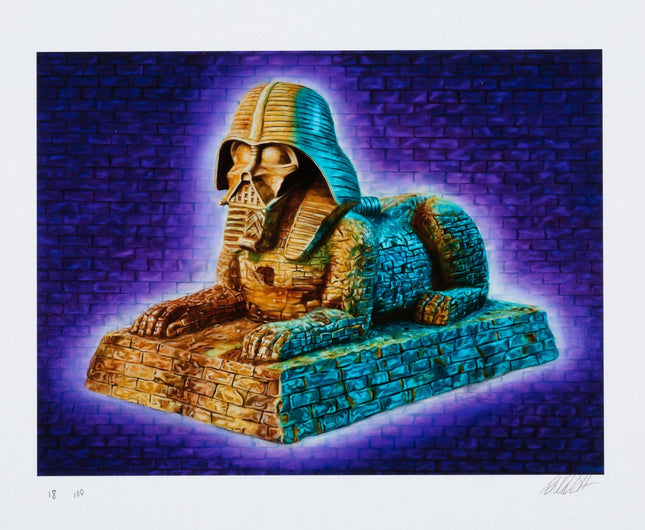
Villain

Ron English Vader Sphinx Archival Print by Ron English
Vader Sphinx Limited Edition Archival Pigment Fine Art Prints on Moab Entrada Fine Art Paper by Graffiti Street Art and Pop Culture Artist Ron English. 2021 Signed & Numbered Limited Edition of 100 Archival Pigment Print in Colors on Moab Entrada Fine Art Paper Artwork Size 16x13 The "Vader Sphinx" is an extraordinary piece from the collection of Ron English, a prominent figure in contemporary art, renowned for his unique amalgamation of pop culture references with street art aesthetics. In this particular limited edition series, English conjures up a captivating blend of ancient symbolism and modern mythology by juxtaposing the iconic visage of Darth Vader with the timeless form of the Egyptian Sphinx. Limited to a set of 100, each print has been signed and numbered by the artist himself, ensuring its value as a collectible item. The work is sized at 16x13 inches and is printed using archival pigment on Moab Entrada Fine Art Paper, a premium choice that enhances the depth and vibrancy of the artwork's colors. This print serves as a visual dialogue between past and present, invoking the power and mystery of both entities it represents. Vader, an emblem of the dark side in the "Star Wars" universe, is superimposed onto the body of a Sphinx, traditionally seen as a guardian of sacred spaces and knowledge. English's work invites contemplation on the fusion of these powerful symbols, suggesting parallels between the cultural significance of ancient deities and contemporary fictional characters. Through this lens, the print can be seen as a statement on how modern narratives have become a form of mythology and how characters such as Darth Vader have assumed a mythic status in popular culture. The use of bold and expressive colors in the print underscores the themes of power and enigma that are central to the piece. English's proficiency in drawing from graffiti and street art techniques is evident in the way the artwork commands attention and provokes thought. The "Vader Sphinx" is not merely a piece of pop art; it is an artifact of contemporary society's cultural landscape, encapsulating the fusion of historical reverence with modern-day iconography. By crafting such pieces, Ron English cements his role as a bridge between the subversive edge of street art and the polished sphere of fine art, creating works that are as thought-provoking as they are visually striking.
$394.00


